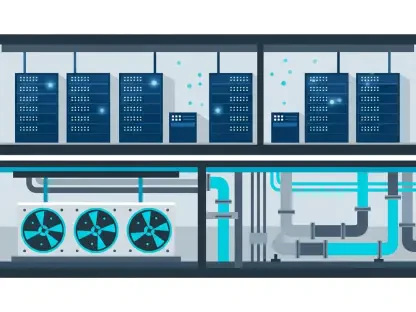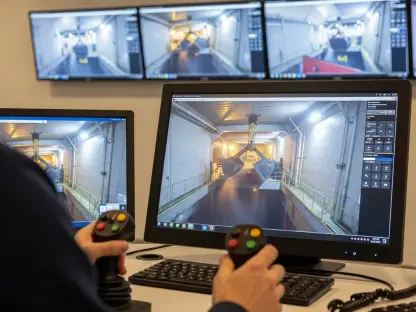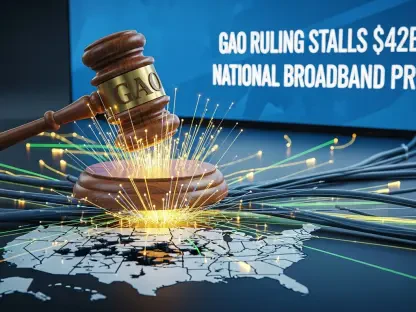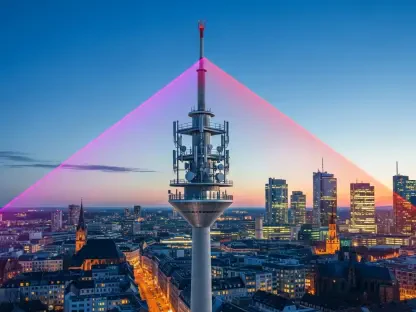In a transformative move for the automotive semiconductor landscape, Infineon Technologies has finalized a significant acquisition of Marvell’s Automotive Ethernet business, a transaction valued at $2.5 billion that promises to redefine connectivity standards in modern vehicles. This deal, completed after securing all necessary regulatory approvals, positions Infineon as a frontrunner in the rapidly evolving domain of software-defined vehicles (SDVs). The integration of advanced Ethernet technology, crucial for high-speed and low-latency communication, underscores the industry’s shift toward sophisticated in-vehicle networking. As vehicles become increasingly reliant on complex electronic architectures, the ability to facilitate seamless data transfer between sensors, processors, and microcontrollers becomes paramount. This acquisition not only enhances Infineon’s technological portfolio but also signals a broader trend of consolidation and innovation within the automotive sector, setting the stage for groundbreaking advancements in connectivity and beyond.
Strategic Impact on Automotive Semiconductor Leadership
The acquisition marks a pivotal moment for Infineon, reinforcing its standing as a leader in the automotive semiconductor market through a calculated expansion of its technological capabilities. By integrating Marvell’s Brightlane Automotive Ethernet portfolio, which includes high-performance PHY transceivers, switches, and bridges supporting data rates from 100 Mbps to 10 Gbps, Infineon is equipped to address the escalating demands of modern vehicle architectures. This technology is essential for ensuring rapid and reliable communication across critical components, a cornerstone of SDVs where safety and performance are non-negotiable. Moreover, the deal brings several hundred skilled professionals into Infineon’s workforce, adding substantial expertise to drive innovation. The strategic alignment with industry trends toward high-bandwidth, low-latency solutions positions Infineon to meet customer needs more comprehensively, fostering stronger partnerships and paving the way for future growth in a competitive landscape.
Beyond the immediate technological gains, this acquisition amplifies Infineon’s global presence, particularly in the U.S., where it enhances research and development capabilities. The establishment of a dedicated “Ethernet Solutions” business line within the Automotive division signals a focused approach to capitalizing on this segment’s potential. Financially, the acquired business is poised for significant impact, with a design-win pipeline valued at approximately $4 billion by 2030 and projected revenue of $225–250 million in the current year. This financial outlook underscores the deal’s role in driving profitable growth for Infineon, aligning with broader market expectations for increased Ethernet adoption in automotive applications. Additionally, the synergy between Marvell’s specialized solutions and Infineon’s existing microcontroller expertise creates a robust platform for delivering integrated offerings, ensuring that the company remains at the forefront of addressing the evolving complexities of vehicle connectivity and electronic systems.
Technological Transformation and Industry Trends
At the heart of this acquisition lies the transformative potential of Ethernet technology as the backbone of in-vehicle networking, a trend that continues to gain momentum in the automotive industry. Ethernet’s ability to support high-speed data transfer with minimal latency is critical for the intricate electronic systems in SDVs, enabling seamless interaction between various vehicle components. This deal empowers Infineon to leverage Marvell’s advanced portfolio to push the boundaries of what’s possible in automotive communication, ensuring that safety, security, and performance standards are met with cutting-edge solutions. The technology’s relevance extends beyond traditional automotive uses, with potential applications in emerging fields like humanoid robotics and physical AI, highlighting the versatility and forward-thinking nature of this strategic move. Such diversification hints at broader implications for Infineon’s role in shaping technological advancements across multiple sectors.
The industry consensus, as reflected in statements from leadership at both companies, points to a shared vision for Ethernet’s role in driving innovation. Infineon’s CEO emphasized the expanded portfolio’s significance in partnering with customers to advance SDVs, while Marvell’s leadership expressed confidence in Infineon’s ability to elevate this technology given its extensive reach and resources. This alignment of perspectives reinforces the notion that Ethernet is not merely a trend but a fundamental shift in how vehicles and related technologies will operate in the coming years. The acquisition also mirrors a larger movement within the sector toward consolidation, as companies seek to combine strengths to tackle the challenges of increasingly connected and software-driven environments. By positioning itself at the intersection of hardware and software integration, Infineon is well-prepared to address the sophisticated needs of modern automotive design, setting a precedent for how strategic acquisitions can catalyze industry-wide progress.
Future Pathways for Innovation and Growth
Reflecting on the completion of this deal, it’s evident that Infineon took a decisive step to strengthen its foothold in automotive Ethernet, a move that reshaped its trajectory in the semiconductor space. The integration of Marvell’s specialized technology and talent into Infineon’s operations marked a turning point, enhancing its capacity to innovate within the realm of SDVs and beyond. This acquisition not only solidified Infineon’s market leadership but also highlighted the critical role of high-speed connectivity in meeting the demands of modern vehicles. Looking ahead, the focus should shift to leveraging the newly established Ethernet Solutions business line to drive targeted advancements, ensuring that solutions remain adaptable to emerging challenges. Stakeholders must prioritize collaboration with customers to refine these technologies, while exploring opportunities in adjacent fields like robotics. As the industry evolves, continuous investment in research and development will be essential to sustain momentum, positioning Infineon to lead the charge in redefining connectivity standards for the future.









